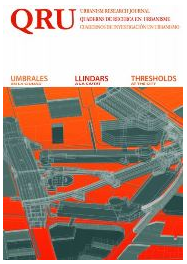Interaccions vs transicions metropolitanas
DOI:
https://doi.org/10.5821/qru.9549Abstract
The city-region potential emerges in the boundary spaces. These areas are seen currently as strategic spaces, in contrast of old-fashioned idea of peripheral spaces. We consider them as optimum places full of opportunities to build modern metropolitan cites. The main features arise from interaction, otherwise than transition or blocked spaces. The challenge is the to turn this space into diversity and permeability, into urban discontinuities that highlight the differences and recognize the interactions of the top metropolitan livability. The structural interaction in cities-regions evokes an evolution of our territories towards sustainability based on a dynamic territorial equilibrium, able to be transformed by culture and heritage factors. Identifying the variety of urban and non-urban contact spaces (treated at different project scales) and sorting the contact city spaces means doing a step forward to the optimization of urban and environmental ecosystems. It is also crucial to separate different ways of living and also encourage the maintenance of proximity economies.Downloads
Issue
Section
License
Those authors who have publications with this journal, accept the following terms:
a. Authors will retain their copyright and guarantee the journal the right of first publication of their work, which will be simultaneously subject to the Creative Commons CC BY-NC-ND-4.0 recognition license that allows third parties to share the work provided that its author and its first publication are indicated in this journal, but they cannot be changed or used commercially.
b. Authors may adopt other non-exclusive license agreements for the distribution of the version of the published work (eg: deposit it in an institutional telematic archive or publish it in a monographic volume) provided that the initial publication in this journal is indicated.
c. Authors are allowed and recommended to disseminate their work through the Internet (e.g. in institutional telematic files or on their website) before and during the submission process, which can lead to interesting exchanges and increase citations. of the published work. (See The effect of open access).













